A naturally sweet and umami-rich Japanese seasoning, Shio Koji transforms simple ingredients into deeply flavorful dishes—perfect for vegan cooking.
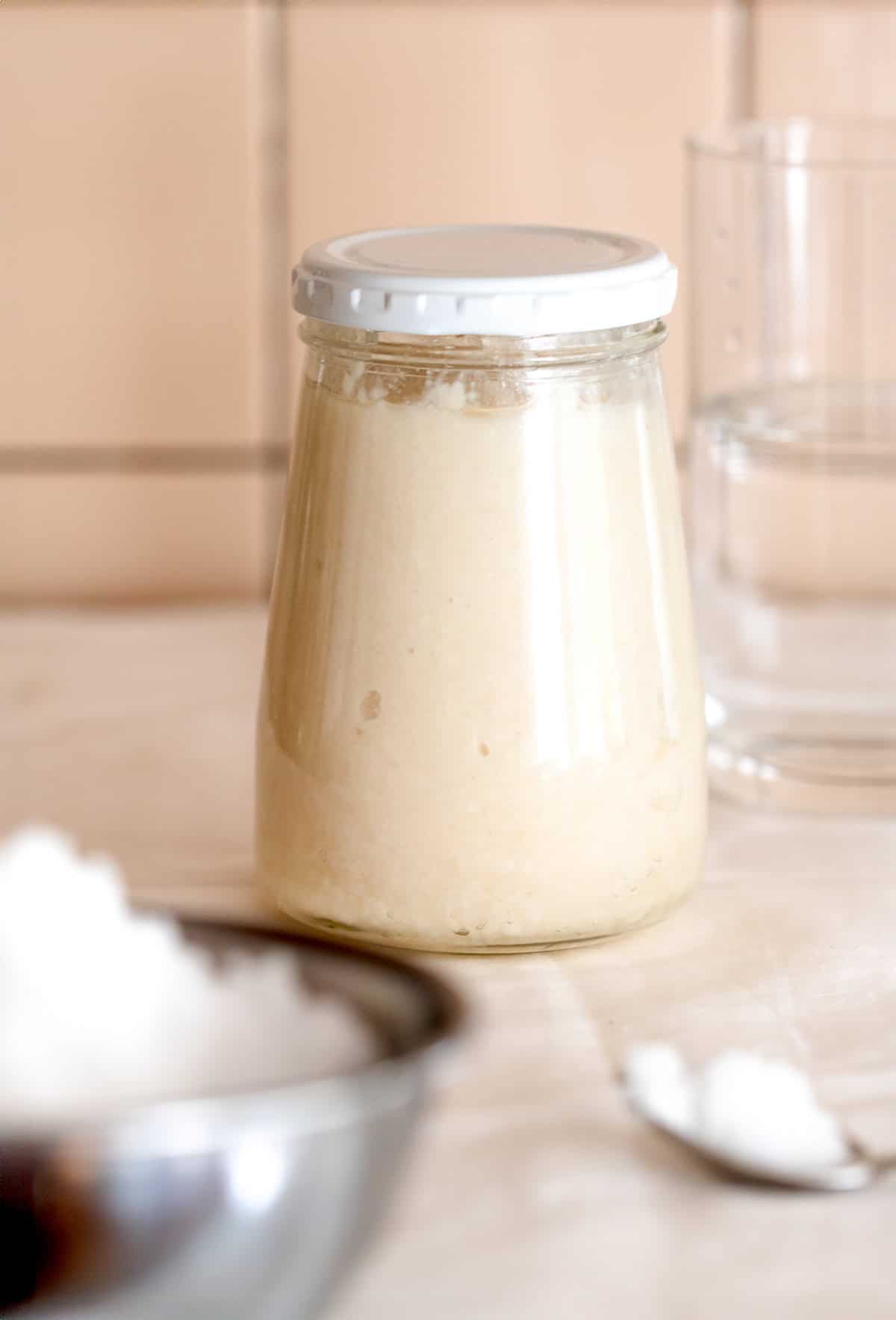
Shio Koji is made from just three simple ingredients: fresh rice koji, salt, and water. Its magic lies in enhancing the natural flavors of your ingredients. A spoonful brings gentle sweetness, savory umami, and depth, turning everyday dishes into something truly special.
Jump to:
- 🐰 Why Shio Koji Makes Your Dishes Shine
- 🥕 What is Rice Koji?
- 🦄 How Rice Koji Becomes Shio Koji
- 🧂 Ingredients
- 🍽 Tools You’ll Need
- 🔪 Step-by-Step Guide
- 👀 Tips
- 🥄 Using Shio Koji in Your Cooking
- 🫙 Storage
- 💡 Other Vegan Seasonings with Koji
- 💭 FAQ
- 👨🏻🍳 Recipes with Shio Koji
- 🌾 Recipes with Fresh Rice Koji
- 📖 Recipe Card|Printable
🐰 Why Shio Koji Makes Your Dishes Shine
Shio Koji is a naturally fermented Japanese seasoning that has been used for centuries to add depth and complexity to dishes. Unlike ordinary salts or seasonings, it not only provides saltiness but also brings out the natural sweetness and umami of ingredients—making it invaluable in vegan cooking.
- Enhances flavor naturally: Amplifies the inherent taste of vegetables, grains, and plant-based proteins.
- Versatile: Works in both savory and sweet dishes, from stews and rice to vegan cheeses and desserts.
- Additive-free: Made only from rice koji, salt, and water—no preservatives or artificial ingredients.
- Easy to make at home: Simply mix and let it ferment; flavorful seasoning is ready in one to two weeks.
🥕 What is Rice Koji?
Rice koji is steamed rice inoculated with Aspergillus oryzae (koji mold), the same ingredient used to make miso, sake, and soy sauce.
There are two types of rice koji: fresh and dried.
- Fresh koji has higher moisture (25–30%) and stronger fermentation power, giving Shio Koji a richer flavor.
- Dried koji has about 10% or less moisture, making it easier to store and use. Its flavor is slightly milder, so the final Shio Koji may be a bit subtler.
🦄 How Rice Koji Becomes Shio Koji
When mixed with salt and water, enzymes in the rice koji break down starches into sugars and proteins into amino acids. This gentle fermentation creates the naturally sweet, umami-rich seasoning known as Shio Koji.
Example with Pumpkin: Simply seasoning pumpkin with Shio Koji elevates its natural sweetness to the point it almost tastes as if sugar were added. Even those who usually prefer less sweet dishes find it delightfully satisfying—this is the magic of Shio Koji, transforming simple ingredients into something special.
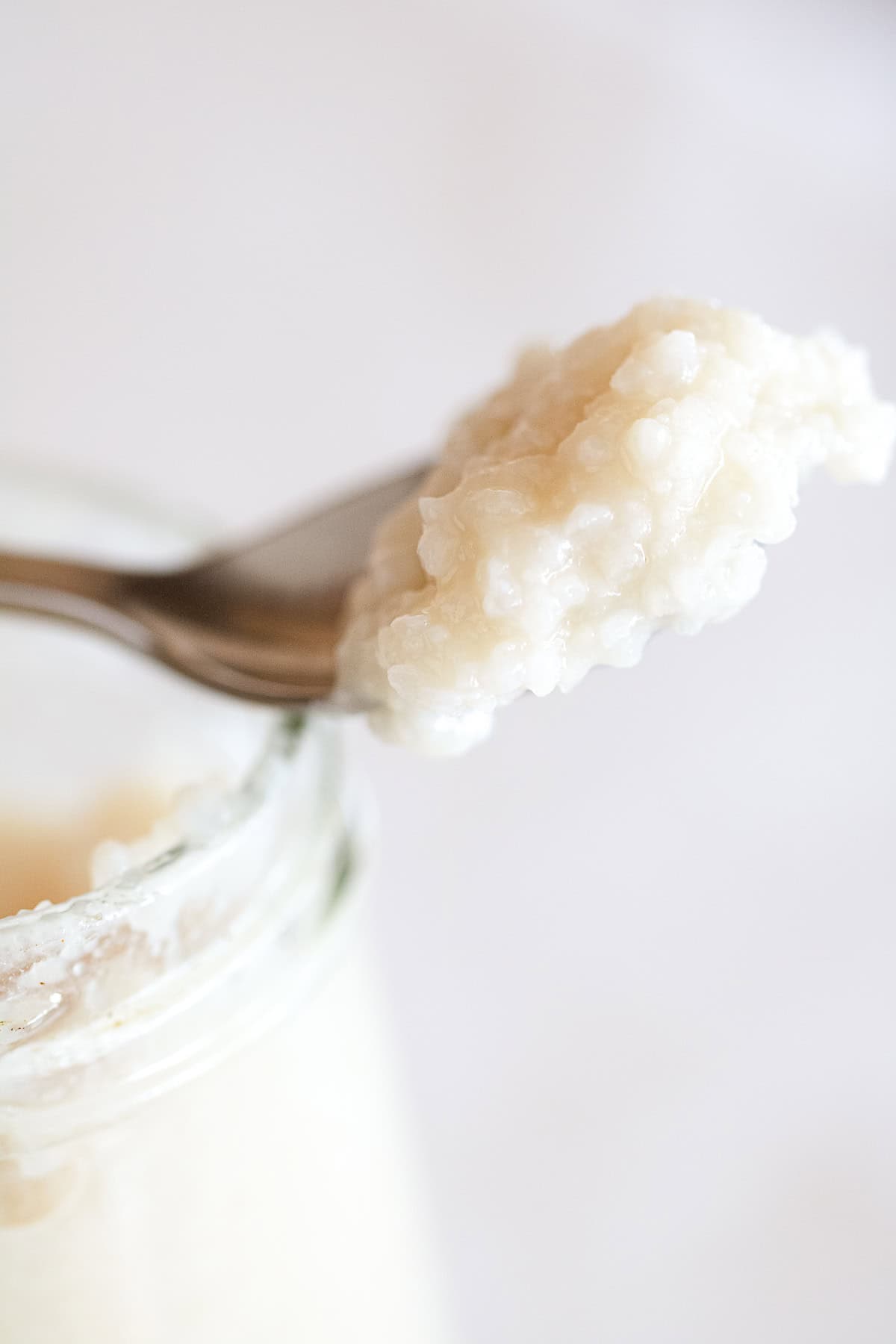
🧂 Ingredients
Shio Koji’s beauty is in its simplicity. Each element plays a role in achieving gentle sweetness and umami depth:
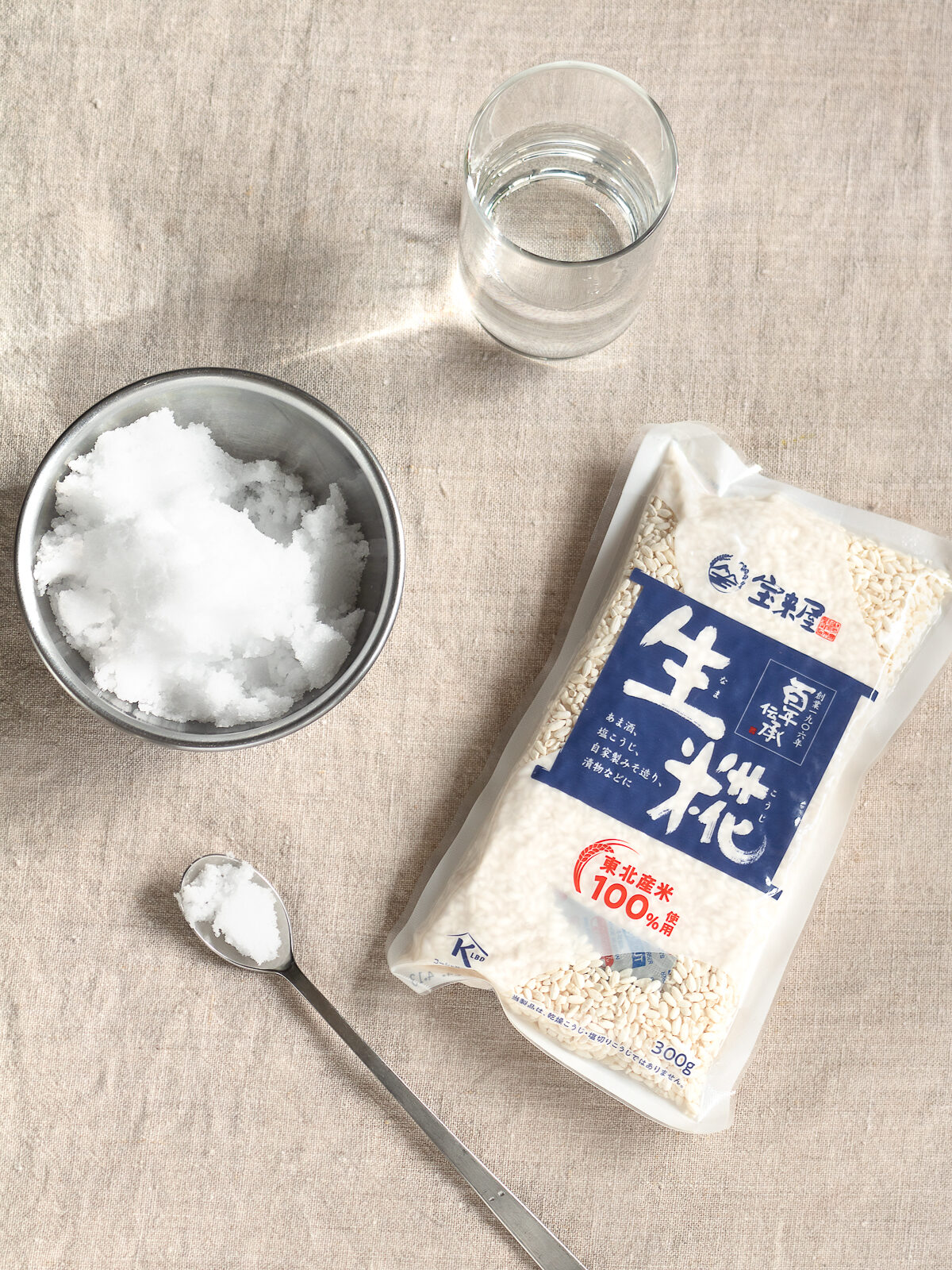
Fresh Rice Koji:
This recipe uses fresh rice koji, which gives the Shio Koji a richer flavor and stronger fermentation power. If fresh koji is hard to find, dried rice koji can be used, though the final Shio Koji will be slightly milder. Adjust the water accordingly when using dried koji.
🌿 Tip: In Japan, you can find fresh rice koji online or at local miso factories. Outside Japan, check specialty stores or online shops such as AEDAN Fermented Foods.
Natural Salt:
Choose unrefined salt that retains its minerals, rather than refined table salt. The minerals in natural salt complement the umami development during fermentation.
Water:
Just plain water, but the right amount is key—enough to cover the koji grains as they ferment.
👇For exact quantities, please refer to the recipe card.
🍽 Tools You’ll Need
- Bowl – for mixing the rice koji and salt.
- Glass container or jar – for fermenting the Shio Koji. Make sure it’s clean and food-safe.
These are simple, everyday items—no special equipment required.
🔪 Step-by-Step Guide
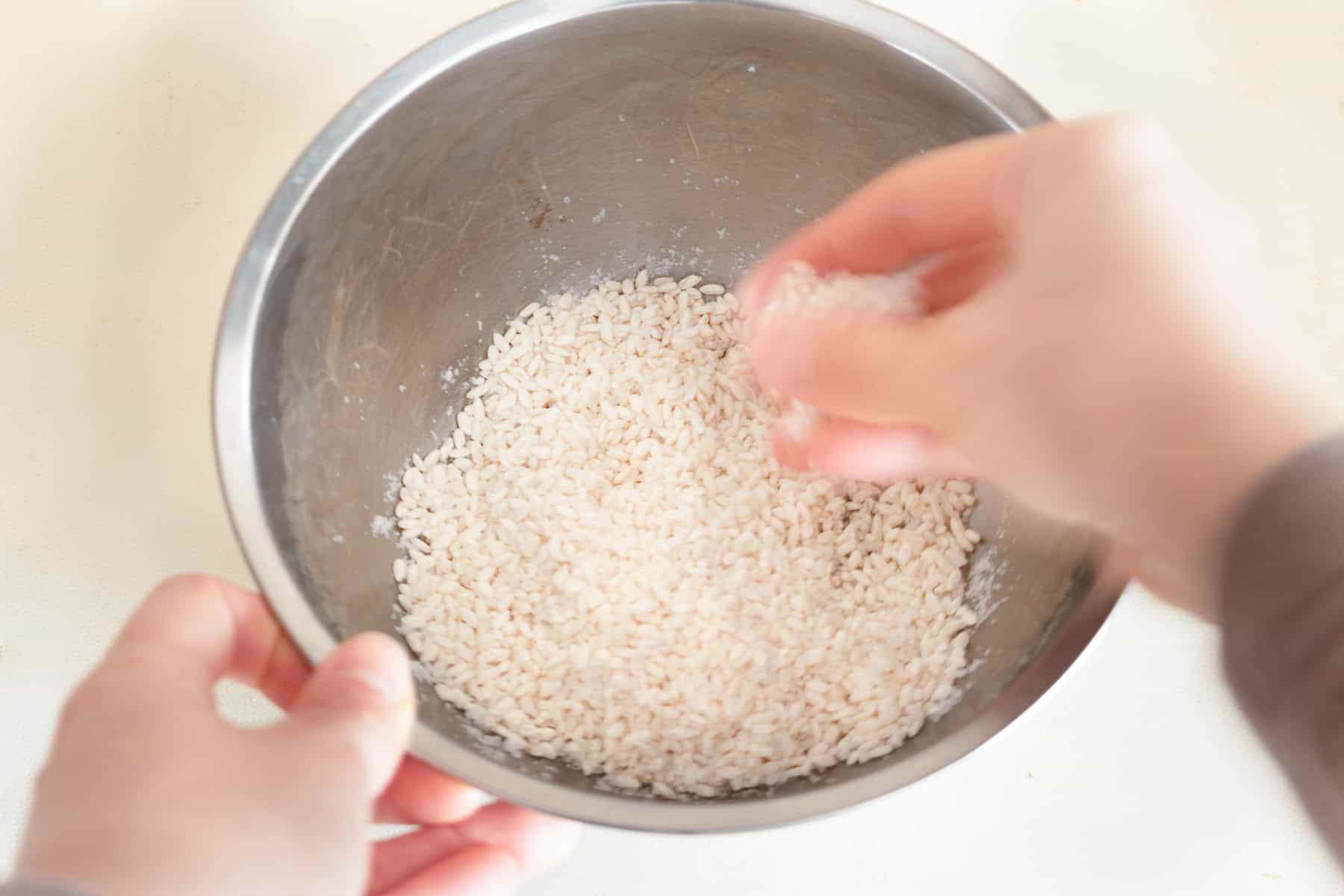
- Mix Rice Koji and Salt
- Place the fresh rice koji and salt in a clean bowl.
- Gently mix by hand until the salt is evenly distributed.
🌿 This step awakens the enzymes in the koji, which will slowly transform the mixture into a naturally sweet and umami-rich seasoning.
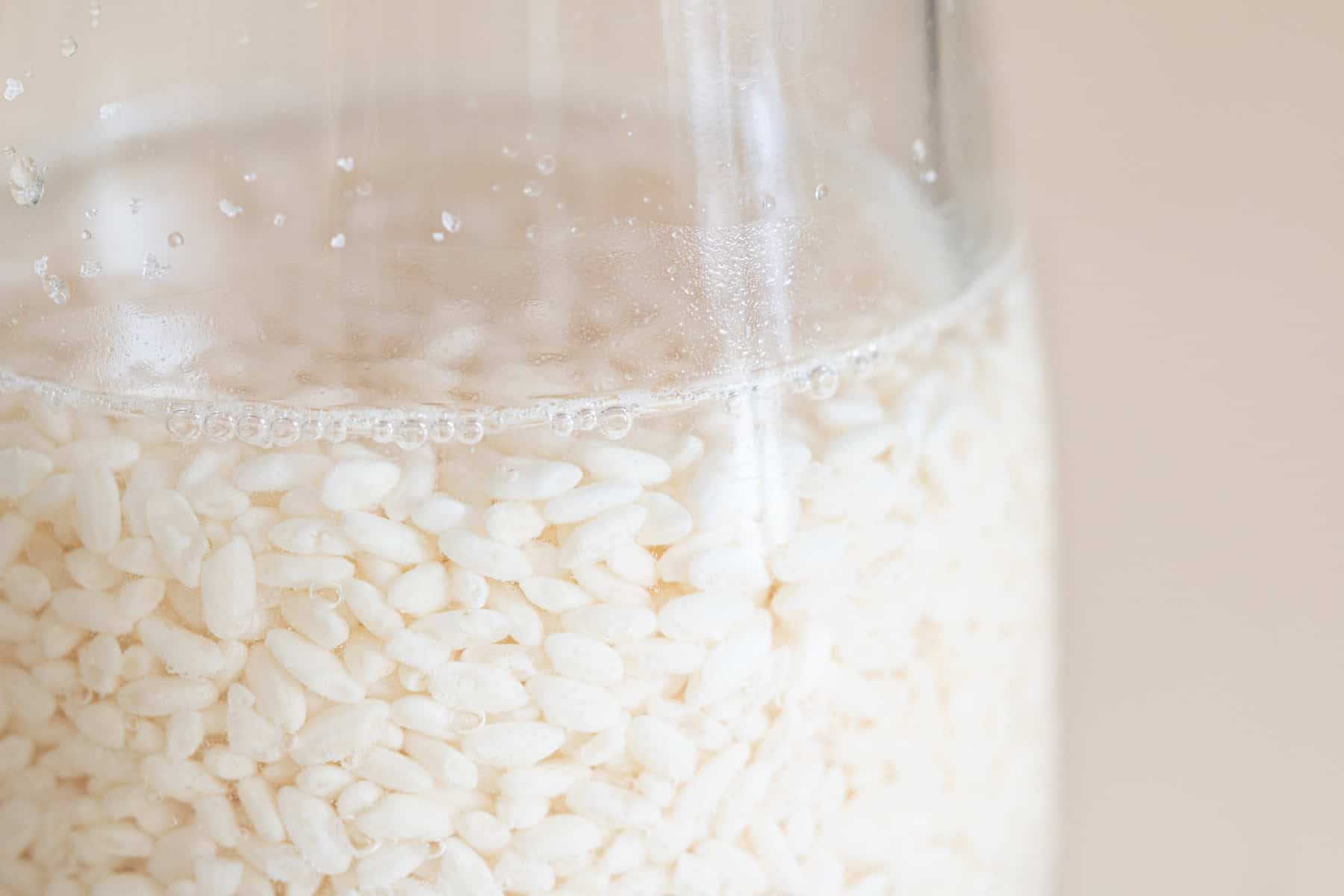
- Transfer and Add Water
- Move the mixture into a clean glass jar or food-safe container.
- Add just enough water to cover the koji. Cover lightly with a lid or plastic wrap, keeping it slightly loose so the koji can “breathe” during fermentation.
- Store at room temperature, away from direct sunlight.
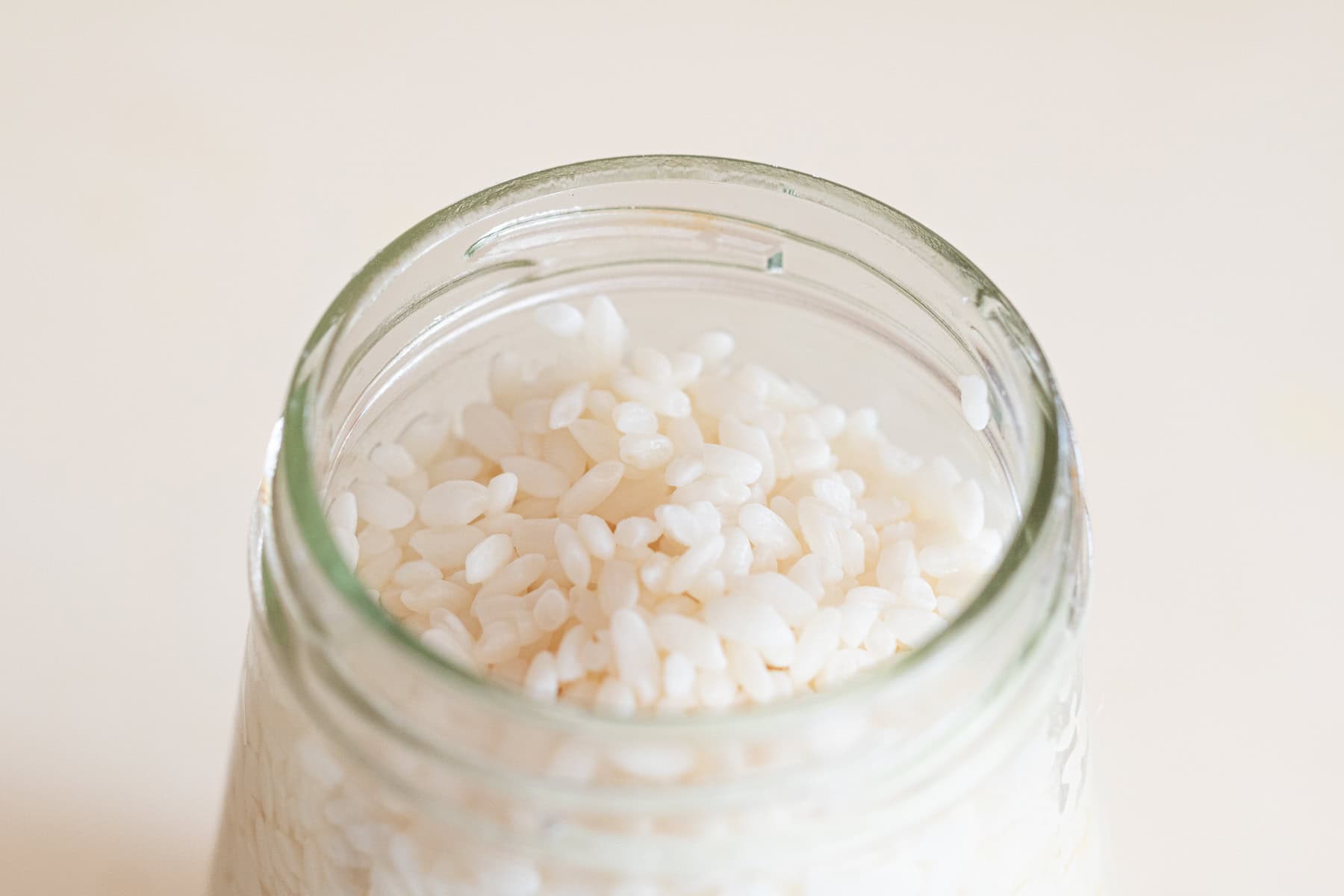
- Check and Adjust
- The next morning, the koji will have absorbed some water.
- If the top looks dry, add just enough water to fully cover the grains.
🌿 The amount of water may need to be adjusted depending on the season and the moisture content of your koji.
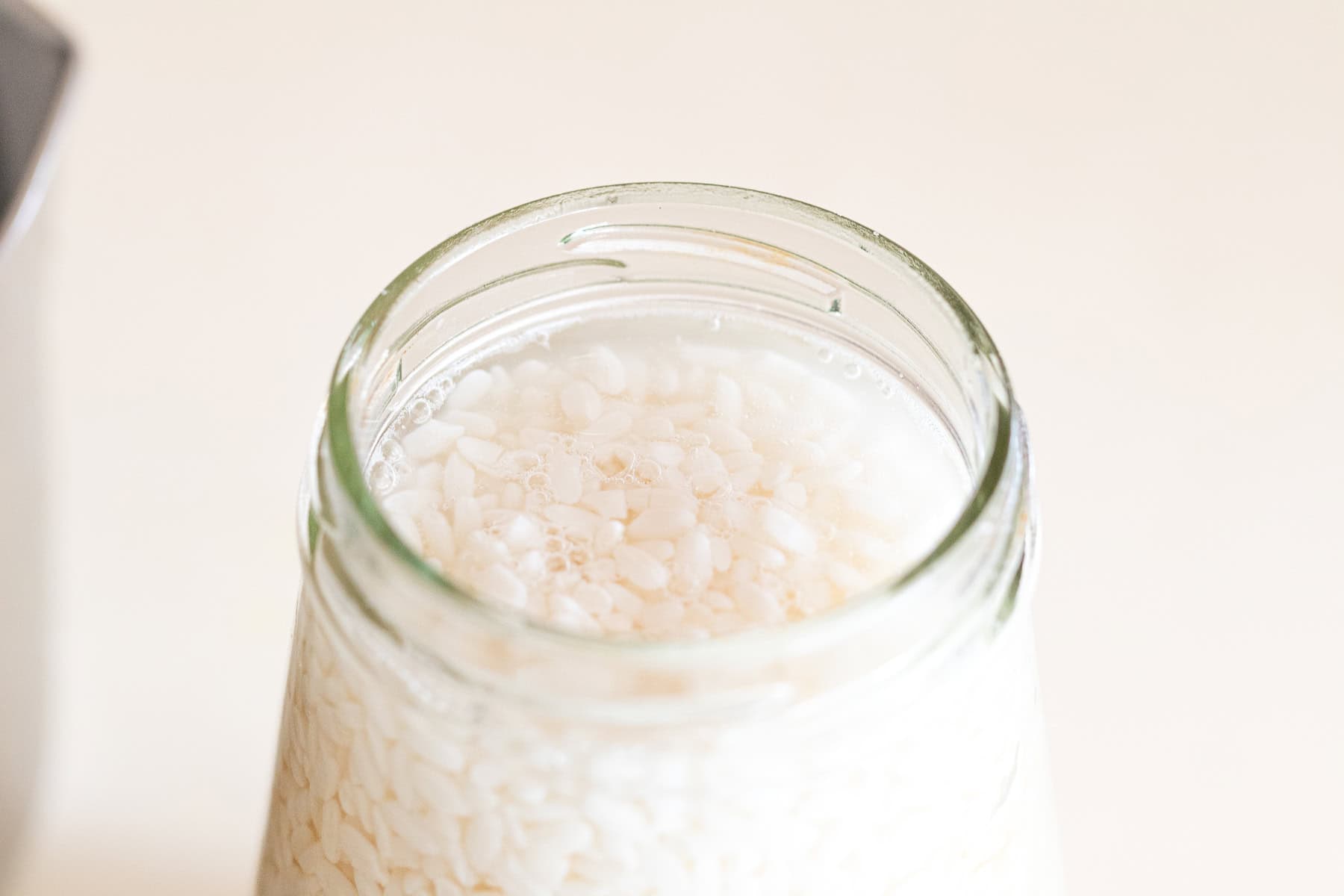
- Daily Stirring
- Cover the jar lightly again and leave it at room temperature.
- Stir gently once a day with a clean spoon to ensure even fermentation.
🌿 For the first two days, if the surface looks dry, add a little more water—once or twice is usually enough.
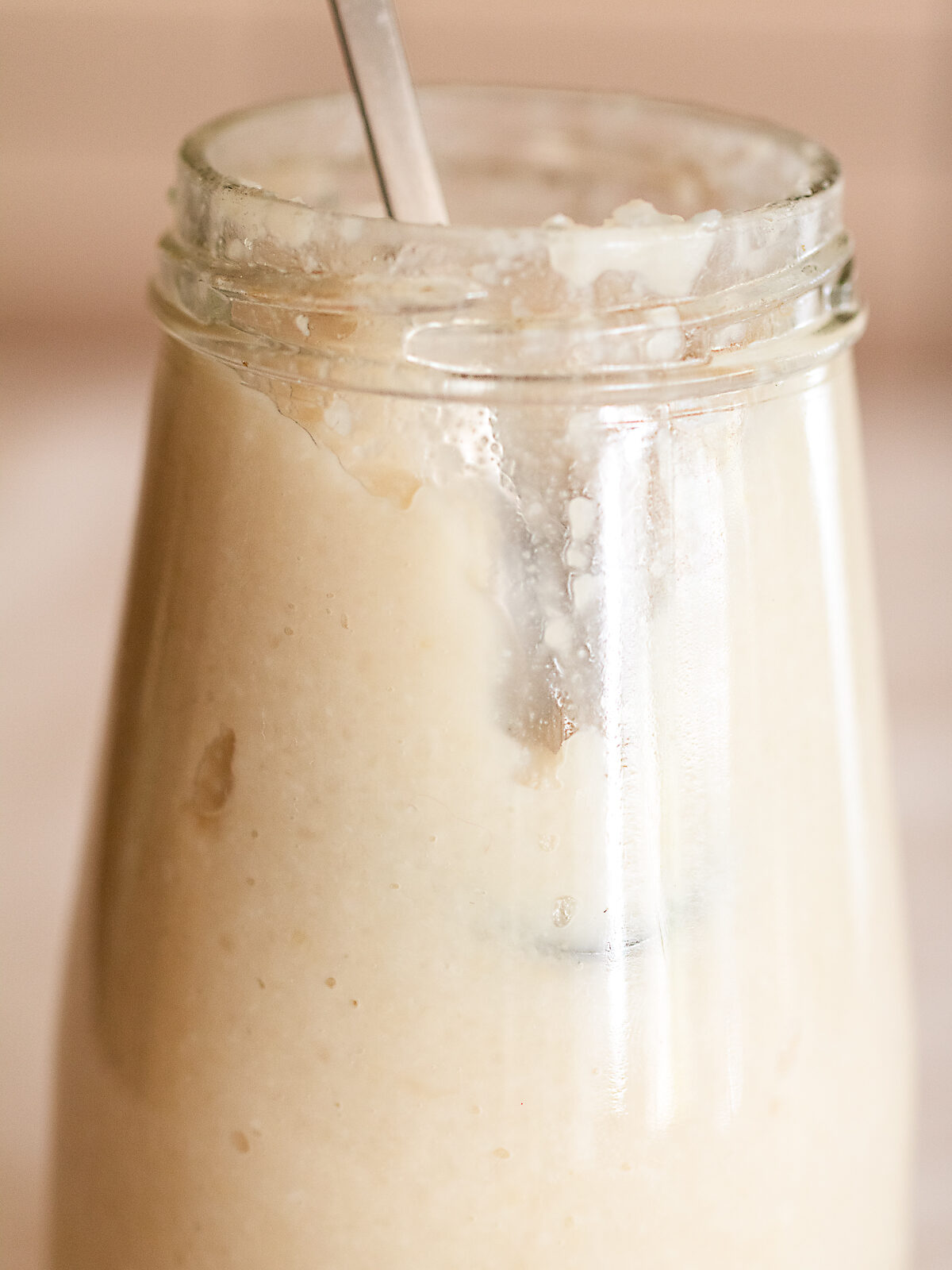
- Fermentation Time
- Shio Koji is ready after about 1 week in summer or 2 weeks in winter.
🌿 The finished mixture will have a sweet aroma, and the grains will appear soft and plump, almost losing their individual shape.
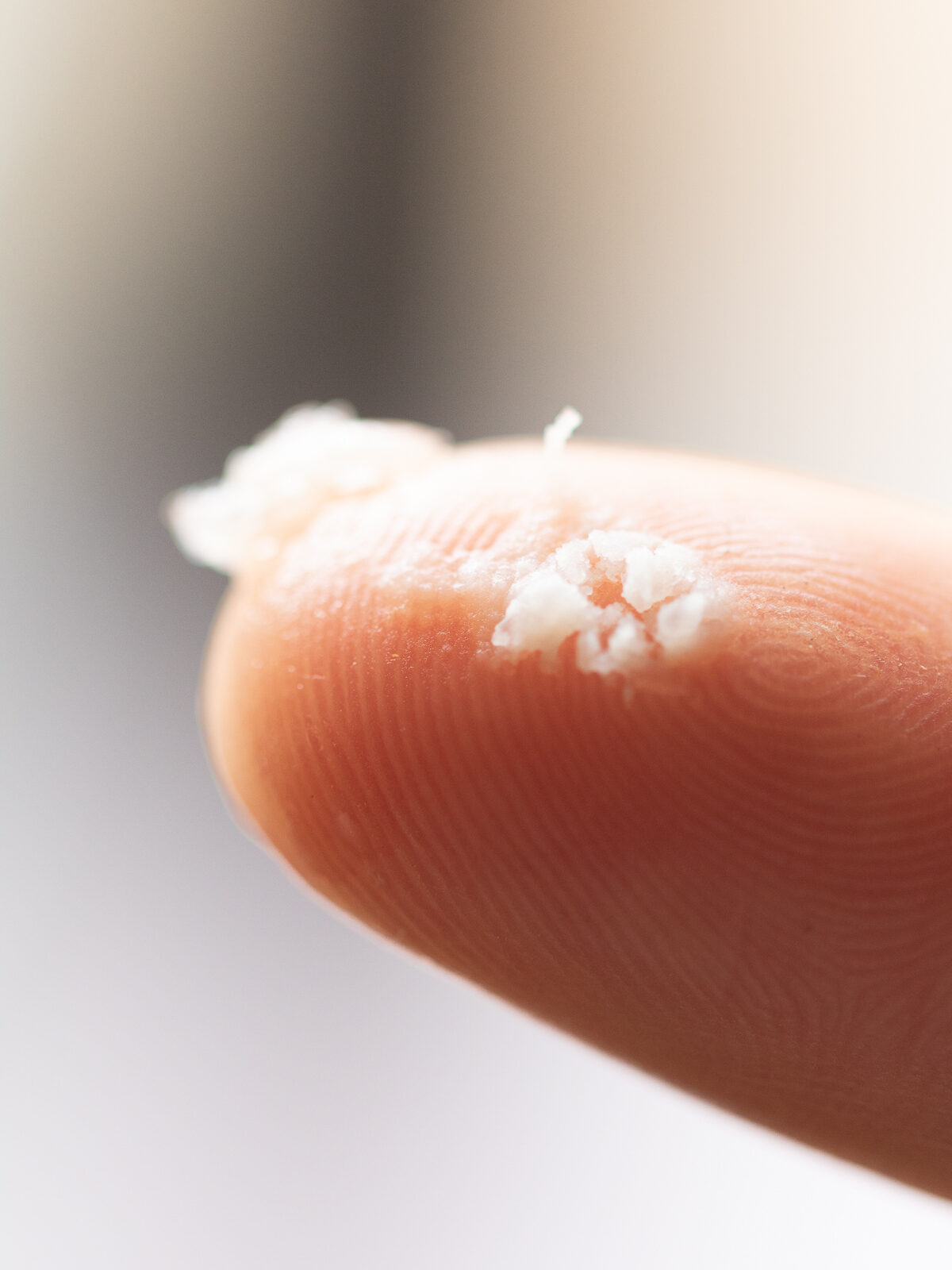
- Final Texture and Storage
- The koji should be soft and easily mashed between your fingers.
- The saltiness will mellow, and the umami flavor will deepen.
- Store the finished Shio Koji in the refrigerator to preserve its flavor.
👀 Tips
- Keep the lid slightly loose during fermentation so the koji can breathe.
- Avoid adding too much water; a thick, well-balanced Shio Koji is easier to use in cooking.
- Low salt content shortens shelf life, so maintain the proper ratio of salt to koji.
🥄 Using Shio Koji in Your Cooking
Shio Koji is gentle, naturally sweet, and full of umami, making it a versatile companion in many vegan dishes. Here are a few ways to enjoy it:
1. Enhancing Rice Dishes
Add a spoonful of Shio Koji when cooking Takikomi-gohan—a seasoned rice dish with vegetables and other ingredients. It brings out subtle sweetness and umami, turning simple rice into something rich and comforting. I often use it for Corn Takikomi-gohan or Bamboo Shoot Mixed Rice.
2. Adding Cheesy Flavors to Vegan Desserts
In Japan, vegan cheese options are limited, so Shio Koji is a great tool for adding that savory, cheesy note naturally. Examples include:
3. Pickling Vegetables
Shio Koji also works wonderfully for fresh, simple pickles. Homemade pickles are additive-free, healthier, and full of natural flavor. Examples:
🌿 A spoonful of Shio Koji can subtly elevate vegetables, grains, and even plant-based cheeses, creating depth and sweetness without overpowering the dish.
🫙 Storage
- Once fermentation is complete, you can close the lid tightly.
- Store your finished Shio Koji in the refrigerator.
- It will keep for about six months, but we recommend using it before the sweet aroma fades for the best flavor.
💡 Other Vegan Seasonings with Koji
Once you’ve mastered making Shio Koji, you can explore other vegan seasonings using different types of koji. These are wonderful additions to your Japanese-style vegan kitchen.
Soy Sauce Koji: Sweeter and richer in umami than regular soy sauce, it enhances the flavor of dishes without adding too much salt. Perfect for everyday cooking as a soy sauce substitute, or to give a dashi-like depth to soups, stir-fries, and marinades.
Onion Koji: A flavorful substitute for consommé. It adds natural sweetness and depth to soups, Japanese curry, pasta dishes, and more—no need for store-bought bouillon cubes.
Experimenting with different koji-based seasonings can elevate simple vegan meals into dishes with complex, satisfying flavors.
💭 FAQ
A: I haven’t tried making Shio Koji with dried koji myself yet, but it should work. You can likely use the same amount as fresh koji—just be sure to adjust the water to get the right consistency. I’ll share a tested method once I try it out.
A: When stored in the refrigerator, it can last about six months. Use it before the aroma begins to fade for the best flavor.
A: Yes! It enhances natural sweetness and adds a subtle umami note, making it perfect for vegan desserts like cakes, cheesecakes, and spreads.
A: Absolutely. Just maintain the correct ratio of rice koji, salt, and water, and ensure your container is large enough for gentle fermentation.
A: No special tools are required—just a bowl, a clean jar or container, and a spoon for mixing.

If you like this recipe or have already made it, we'd love to hear your thoughts in the COMMENTS 🐒. Also feel free to ask any questions or leave any requests!
👨🏻🍳 Recipes with Shio Koji
Shio Koji is incredibly versatile in vegan cooking. Here are some of my favorite ways to use it:
🌾 Recipes with Fresh Rice Koji
Fresh rice koji is the heart of many traditional Japanese seasonings, and you can use it beyond Shio Koji. Here are some inspiring ways to bring koji into your vegan kitchen:
📖 Recipe Card|Printable
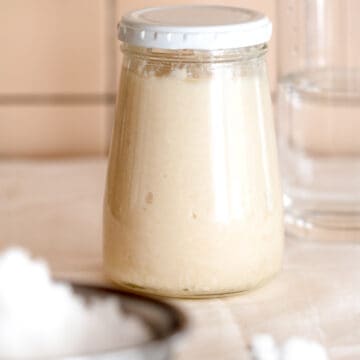
Home made Shio Koji
Equipment
- Bowl
- Glass container or Jar
Ingredients
- 100 g Fresh Rice Koji
- 35 g Natural Salt
- 110 g Water
Instructions
- Mix Rice Koji and Salt: Place the fresh rice koji and salt in a clean bowl. Gently mix by hand until the salt is evenly distributed. * This step awakens the enzymes in the koji, which will slowly transform the mixture into a naturally sweet and umami-rich seasoning.100 g Fresh Rice Koji35 g Natural Salt
- Transfer and Add Water: Move the mixture into a clean glass jar or food-safe container. Add just enough water to cover the koji. Cover lightly with a lid or plastic wrap, keeping it slightly loose so the koji can “breathe” during fermentation. Store at room temperature, away from direct sunlight.110 g Water
- Check and Adjust: The next morning, the koji will have absorbed some water. If the top looks dry, add a little more to fully cover the grains. * The amount of water may need to be adjusted depending on the season and the moisture content of your koji.* For the first two days, if the surface looks dry, add a little more water—once or twice is usually enough.
- Daily Stirring: Cover the jar lightly again and leave it at room temperature. Stir gently once a day with a clean spoon to ensure even fermentation.
- Fermentation Time: Shio Koji is ready after about 1 week in summer or 2 weeks in winter.* The finished mixture will have a sweet aroma, and the grains will appear soft and plump, almost losing their individual shape.
- Final Texture and Storage: The koji should be soft and easily mashed between your fingers. The saltiness will mellow, and the umami flavor will deepen. Store the finished Shio Koji in the refrigerator to preserve its flavor.
Notes
- Keep the lid slightly loose during fermentation so the koji can breathe.
- Avoid adding too much water; a thick, well-balanced Shio Koji is easier to use in cooking.
- Low salt content shortens shelf life, so maintain the proper ratio of salt to koji.

We'd absolutely love to see your photos of the dishes you've made with our recipes! Share them on Instagram with the hashtag #vegin_vegan_vegun or just tag us @veginveganvegun 🙏






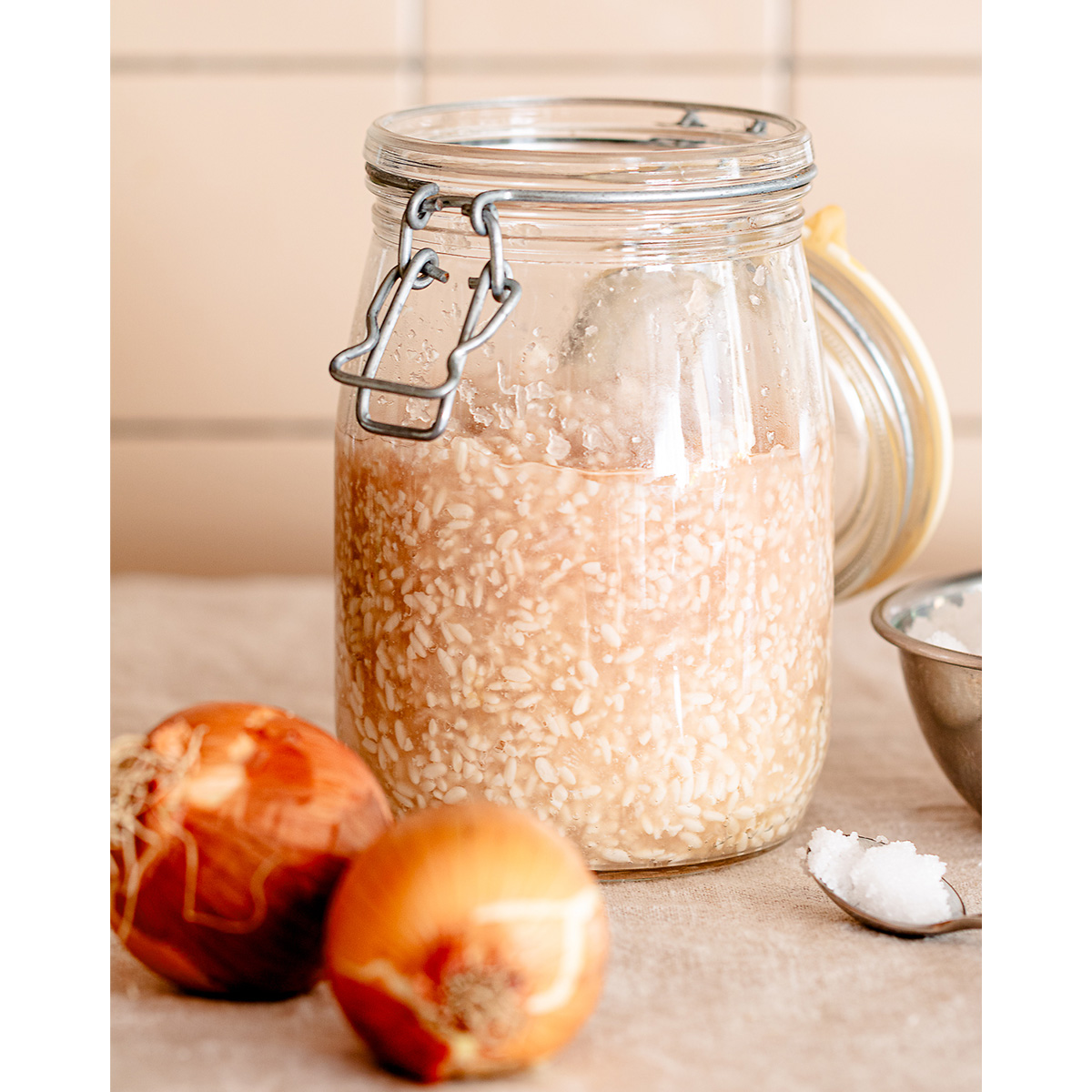

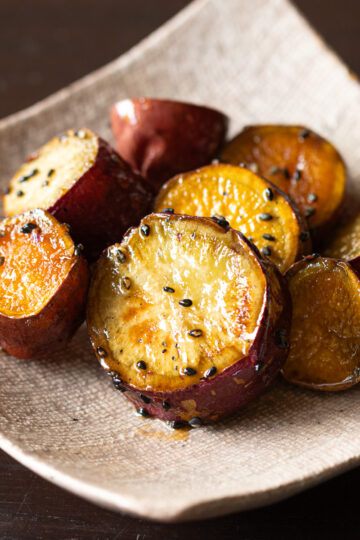

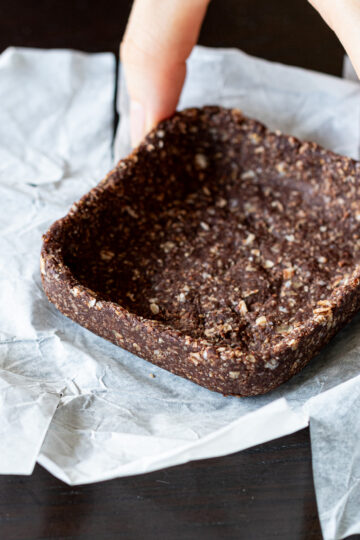
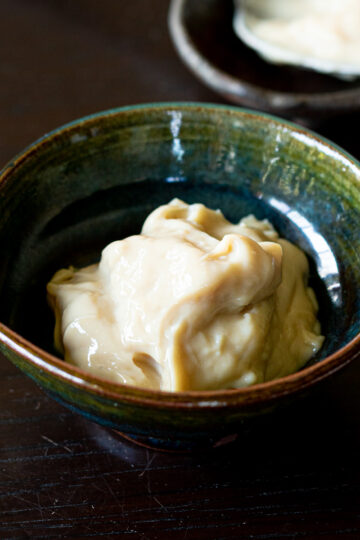
MIKA says
I forgot to mix the salt and koji first. I'm a little worried it might not turn out right.
Vegin Vegan Vegun! says
Did you succeed?
When I feel lazy, I just put all the ingredients in a storage container and mix them together.
It still comes out great, so you don't have to worry about it.
Thanks for your question!